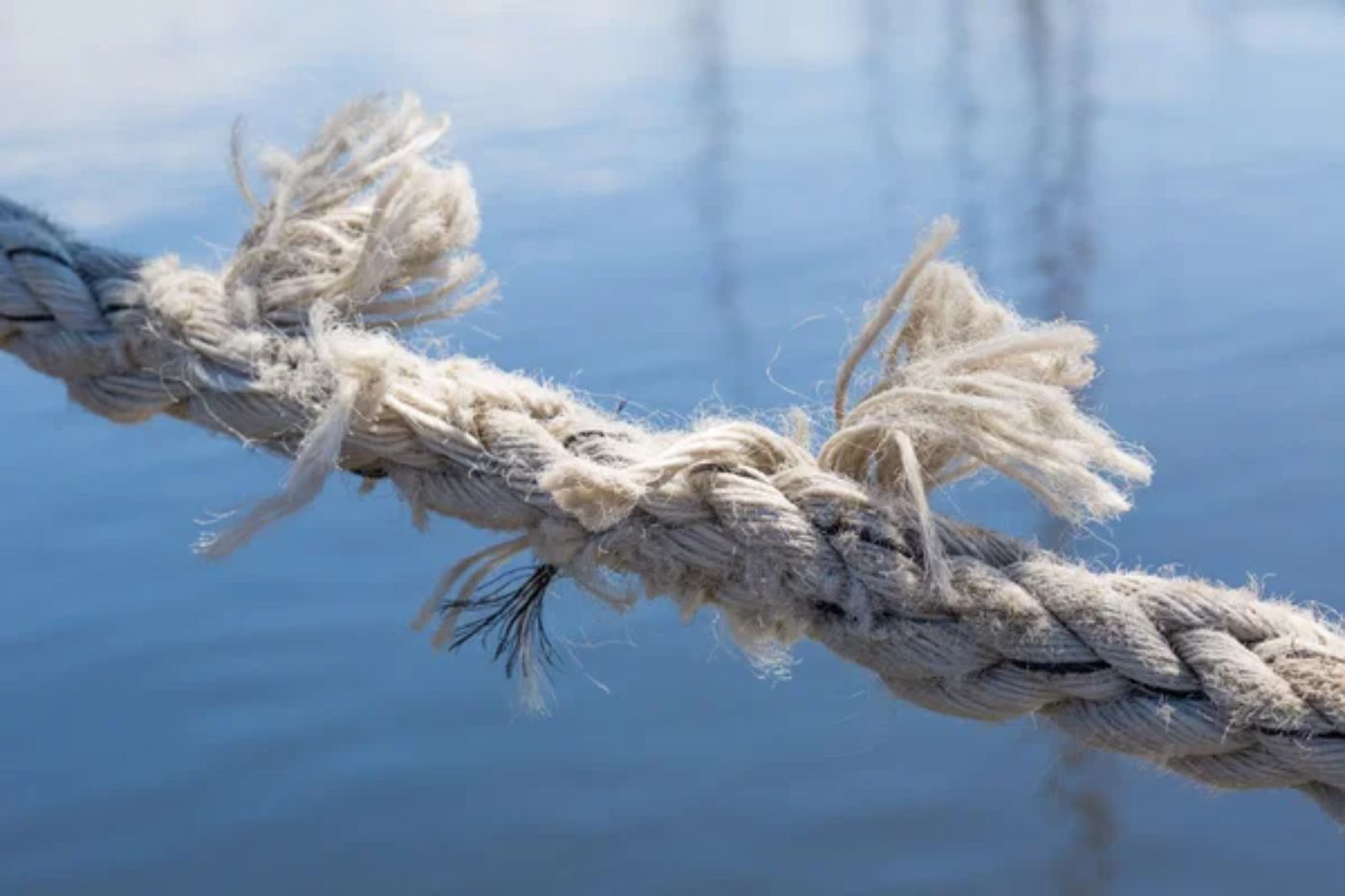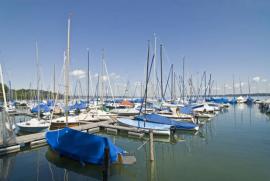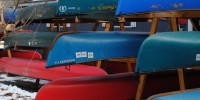How To Winterize a Mooring (in 7 Easy Steps)
Winterizing a mooring involves taking a few simple steps to ensure that it will be in good condition when you're ready to use it again in the spring. By following these, you can extend the life of your mooring and avoid costly repairs. In this article, we'll be teaching you how to winterize a mooring in just 7 easy steps.
First, remove all lines and chains from the mooring. Then, clean the mooring buoy and lower it to the bottom of the water to prevent damage. Next, install a winter stick to mark its location, a winter cover, and a de-icer to prevent the water around the boat from freezing.
Check the mooring periodically throughout the winter to ensure it is secure and in good condition. Let's take a look at a more detailed discussion of each of these steps below.
Summary
- Remove any hardware, such as buoys and swivels, and replace them with a winter stick or buoy.
- Inspect your chains and lines for any signs of wear and replace them if necessary.
- Installing a de-icer can prevent water from freezing around the boat or dock during the winter months, which can prevent damage to the mooring.
- It's best to remove and store the mooring in a dry, secure place during extreme winter conditions to prevent damage to the mooring and boat.

On this page:
- How to Winterize a Mooring: 7 Easy Steps
- Step 1: Inspect the Mooring
- Step 2: Clean and Service the Mooring
- Step 3: Protect the Mooring Against Ice and Snow
- Step 4: Remove the Mooring
- Step 5: Store the Mooring
- Step 6: Reinstall the Mooring
- Step 7: Properly Dispose of Old Mooring Materials
- Additional Step: Installing a De-Icer
How to Winterize a Mooring: 7 Easy Steps
Here are a few things you should know about mooring winterization:
Importance of winterizing a mooring
Winterizing your mooring helps protect your boat from damage, ensure its longevity, and prevent costly repairs. The harsh winter conditions can cause damage to your mooring's components, such as the chain, anchor, and buoy.
Additionally, ice buildup around the mooring can cause it to shift, which can lead to your boat breaking free and drifting away.
When to winterize your mooring
It's best to winterize your mooring before the first freeze of the season. Depending on where you live, this could be as early as October or as late as December.
However, if you live in a colder climate, you may need to start earlier in the season, as early as September. On the other hand, if you live in a milder climate, you may be able to wait until December to winterize your mooring.
Preparing for mooring winterization
Before you begin the process of winterizing your mooring, first, make sure you have all the necessary tools and equipment. This may include a boat hook, pliers, a socket set, a wrench, a buoy, a swivel, a shackle, and a pennant.
Next, inspect your mooring for any signs of wear or damage. Check the chain for rust or corrosion, and make sure the buoy is in good condition. If you notice any issues, make the necessary repairs before winterizing your mooring.
If you're in an area with heavy ice or snow, you may need to take extra precautions to protect your mooring. For example, you may need to add additional weight to the chain or use a winter log to keep the mooring in place.
Think you're prepared already? Let's begin!
Step 1: Inspect the Mooring
Before starting the winterization process, you need to first inspect the mooring for any damage or wear and tear. Inspecting the mooring will help you identify any issues that need to be addressed before winter sets in.
-
Start by checking the mooring chain for any signs of rust, corrosion, or wear. If you notice any damage, replace the chain with a new one. A damaged chain can weaken the mooring system and lead to the boat breaking loose during high tides or storms.
-
Next, inspect the float and buoy for any damage or leaks. If the float or buoy is damaged, replace it with a new one. A damaged float or buoy can cause the mooring to sink, which can lead to the boat breaking loose.
-
Check the shackle and mooring ball for any signs of wear or damage. If you notice any issues, replace them with new ones. A damaged shackle or mooring ball can weaken the mooring system and lead to the boat breaking loose.

-
Inspect the links and rode for any signs of wear or damage. If you notice any issues, replace them with new ones. A damaged link or rode can weaken the mooring system and lead to the boat breaking loose.
-
If you're in a mooring field, check the surrounding moorings for any signs of damage or wear. A damaged mooring in the field can cause the boats to collide during high tides or storms.
Step 2: Clean and Service the Mooring
Now that you have removed the top hardware, it's time to clean and service the mooring to ensure it lasts through the winter.
-
First, remove any debris, mud, or barnacles that may have accumulated on the chain or rope. You can use a wire brush or scraper to remove any stubborn barnacles. If the rope or chain is particularly dirty, you can soak it in a bucket of warm, soapy water to help loosen the dirt and grime.
-
Next, inspect the rope or chain for any signs of wear or damage. Look for any frayed or broken strands in the rope or any rust or corrosion on the chain. If you notice any damage, it's best to replace the rope or chain before storing it for the winter.
-
Once you've inspected the rope or chain, it's time to lubricate it to prevent rust and corrosion. You can use a silicone-based lubricant or a spray-on rust inhibitor to coat the rope or chain. Be sure to wipe away any excess lubricant to prevent it from attracting dirt and debris.
-
If your mooring is in saltwater, strive to clean and service it regularly to prevent corrosion. Saltwater can be particularly harsh on metal components, so be sure to rinse the rope or chain with freshwater after each use.
Step 3: Protect the Mooring Against Ice and Snow
Below are some tips to help you winterize your mooring and keep it in good condition:
-
Shorten the chain: When winterizing your mooring, it's a good idea to "short rope" the chain. This means that you should remove any extra slack in the chain and secure it tightly to the buoy. This will help prevent the chain from getting tangled or damaged by ice and snow.
-
Install a winter stick: A winter stick is a long, thin pole that is attached to the top of the buoy and extends above the water line. This helps prevent ice from forming around the buoy and damaging the mooring. Make sure the winter stick is securely fastened to the buoy and extends at least six feet above the water line.
- Use a winter cover: If your mooring is located in an area with heavy snowfall, you may want to consider using a winter cover. This will help protect the buoy and chain from damage caused by snow and ice. Make sure the cover is securely fastened to the buoy and extends all the way to the water line.

How To Make an Affordable DIY Winter Boat Cover
-
Check the mooring regularly: Look for any signs of damage or wear and tear, and make any necessary repairs as soon as possible.
-
Remove the mooring in extreme conditions: If you're expecting extremely heavy snowfall or ice, it may be best to remove the mooring altogether. This will help prevent damage to the mooring and ensure that it's in good condition when you're ready to use it again in the spring.
Step 4: Remove the Mooring
If you live in an area with extreme winter weather conditions, it may be best to remove the mooring altogether and store it for the winter. Here are some tips for removing the mooring:
-
Take note of the location: Before removing the mooring, make sure you take note of its exact location so you can easily find it again in the spring.
-
Use a boat to remove the mooring: You'll need a boat to remove the mooring from the water. Attach a line to the buoy and slowly pull the mooring towards the boat.
-
Remove the chain and rope: Once the mooring is close to the boat, remove the chain and rope from the water. Be careful not to damage the boat or the mooring in the process.
-
Clean and store the mooring: Once the mooring is out of the water, clean it thoroughly and store it in a dry, secure location for the winter.
Step 5: Store the Mooring
If you decide to store the mooring for the winter, here are some tips to help you do it properly:
- Clean the mooring: Before storing the mooring, make sure you clean it thoroughly to remove any dirt, debris, or saltwater.
- Dry the mooring: Once the mooring is clean, make sure it's completely dry before storing it. Moisture can cause rust and corrosion, which can damage the mooring.
- Store the mooring in a dry location: Store the mooring in a dry, secure location, such as a garage or shed. Make sure it's protected from the elements and any potential damage.
- Cover the mooring: If you're storing the mooring outside, perhaps consider covering it with a tarp or other protective cover to keep it dry and protected from the elements.

Winter Boat Cover vs. Shrink Wrap & Tarp - What's Best?
Step 6: Reinstall the Mooring
When spring arrives, it's time to reinstall the mooring. Here are some tips to help you do it properly:
- Inspect the mooring: Before reinstalling the mooring, inspect it for any signs of damage or wear and tear. Do any necessary repairs before reinstalling it.
- Choose the right location: Choose a safe, protected location to reinstall the mooring. Keep it in a location that's suitable for your boat and the conditions.
- Attach the chain and rope: Once you have chosen the location, attach the chain and rope to the buoy and lower it into the water. Make sure the chain is properly secured to the bottom and the buoy is floating on the surface.
- Check the mooring regularly: Once the mooring is in place, check it regularly for any signs of damage or wear. Make any necessary repairs as soon as possible.
Step 7: Properly Dispose of Old Mooring Materials
Below are some tips to help you dispose of old mooring materials:
- Recycle if possible: If the old mooring materials are made of recyclable materials such as metal, plastic, or rope, consider recycling them. Contact your local recycling center or waste management facility to find out how to properly recycle these materials.
- Dispose of non-recyclable materials properly: If the old mooring materials cannot be recycled, dispose of them properly. Contact your local waste management facility to find out how to properly dispose of these materials.
- Do not dump in the water: Do not dump old mooring materials in the water, as this can harm marine life and the environment.
Additional Step: Installing a De-Icer
If you're in an area with extremely cold temperatures, installing a de-icer can help prevent the water around the boat from freezing and damaging the mooring.
A de-icer is a device that is used to prevent water from freezing around a boat or dock during the winter months. It works by circulating warm water around the boat or dock, which prevents ice from forming and damaging the mooring.
De-icers can be electric or propane-powered and can be attached to the mooring chain or rope. They are especially useful in areas with extremely cold temperatures or in areas with a lot of ice buildup. Here's how you can install a de-icer:
-
Choose the right de-icer: Choose a de-icer that's suitable for the size of your boat and the conditions in your area. Make sure it's designed for use in saltwater if your mooring is in saltwater.
-
Attach the de-icer: Attach the de-icer to the mooring chain or rope, making sure it's securely fastened.
-
Lower the de-icer into the water: Lower the de-icer into the water, and see if it's positioned in the area around the boat where the water is most likely to freeze.
-
Plug in the de-icer: Plug in the de-icer to a power source, and make sure it's working properly.
Did you find the answer to your specific question?
👍 0 👎 0




Leave a comment